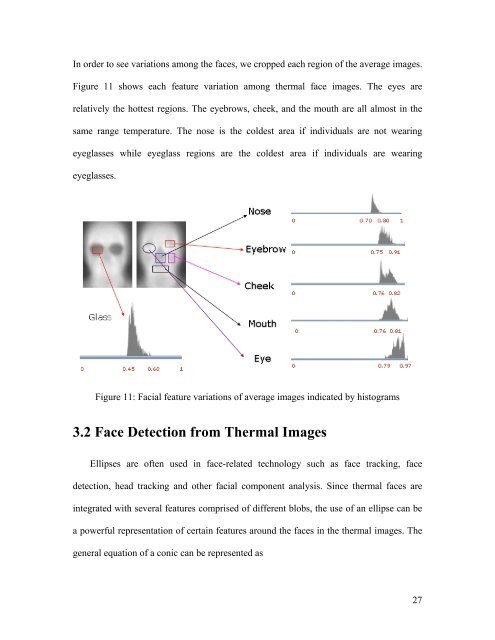Fusion of Visual and Thermal Face Recognition Techniques: A ...
Fusion of Visual and Thermal Face Recognition Techniques: A ...
Fusion of Visual and Thermal Face Recognition Techniques: A ...
Create successful ePaper yourself
Turn your PDF publications into a flip-book with our unique Google optimized e-Paper software.
In order to see variations among the faces, we cropped each region <strong>of</strong> the average images.<br />
Figure 11 shows each feature variation among thermal face images. The eyes are<br />
relatively the hottest regions. The eyebrows, cheek, <strong>and</strong> the mouth are all almost in the<br />
same range temperature. The nose is the coldest area if individuals are not wearing<br />
eyeglasses while eyeglass regions are the coldest area if individuals are wearing<br />
eyeglasses.<br />
Figure 11: Facial feature variations <strong>of</strong> average images indicated by histograms<br />
3.2 <strong>Face</strong> Detection from <strong>Thermal</strong> Images<br />
Ellipses are <strong>of</strong>ten used in face-related technology such as face tracking, face<br />
detection, head tracking <strong>and</strong> other facial component analysis. Since thermal faces are<br />
integrated with several features comprised <strong>of</strong> different blobs, the use <strong>of</strong> an ellipse can be<br />
a powerful representation <strong>of</strong> certain features around the faces in the thermal images. The<br />
general equation <strong>of</strong> a conic can be represented as<br />
27
















